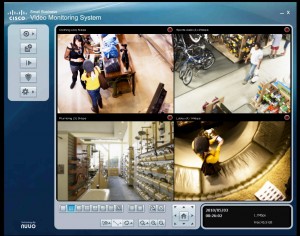The Internet of Things opens up a wide range of possibilities for businesses, especially in the context of an increasingly mobile workforce and primarily mobile customers. To distill down which aspects of IoT are meaningful for business, I joined panelists from Google Enterprise, AnyPresence, and OpenMarket at the Open Mobile Summit to share our thoughts with moderator Maribel Lopez. Here are some of the key insights I took away from our conversations:
The opportunity for businesses is about so much more than just connecting Things. Our industry calls it the Internet of Everything to describe how People, Process, Data, and Things get connected to drive business value. When you look at new ways to connect all aspects of a business, everyone in your organization can make better decisions – and your business can run with greater operational efficiency.
For example, a video surveillance system can do more than just record footage for a retail store. Real-time video analytics software can alert a store manager when the checkout lines are getting too long. The manager can then quickly decide whether to open up more cash registers or have employees assist customers with mobile checkout from their tablets, creating a more enjoyable shopping experience for customers.
The biggest obstacle preventing businesses today from reaching the potential of the Internet of Things is resistance to change. Change management is key for any organization to successfully deploy IoT enablement. When creating new business process models, you’re proposing to change the way that people do their jobs. To ease this transition, you will need to make sure to include employees when designing the new processes. Then communicate the benefits at all levels. The key is to start with a well-defined problem that involves just one or two systems or teams. Prove the new model with data that shows improved outcomes. That data will be necessary to disprove long-held beliefs and motivate the company to overcome its inertia. Success will breed more success.
Industries thought to be saturated are undergoing a renaissance. Industries such as manufacturing, mining, and transportation are very mature, but are seeing revitalization when deploying the Internet of Things and enterprise mobility. Connected machines and big data analytics make new heights of operational efficiency and workforce productivity possible, especially in the middle of a factory or an open pit mine. Adoption of consumption business models in mission critical applications is gaining traction.
Think beyond the four walls of your company to discover opportunities for market disruption. By looking at IoT-enabled improvements throughout the entire value chain, your company and your partners can be more competitive. Consider new ways that you can exchange data with other parts of the value chain and build processes that automate and leverage those new connections.

I’ve given a previous example of how this could transform the automotive industry. Consider what it could mean for the larger transportation industry. Currently, commuters often choose to take an individual car over mass transit if they feel they can’t rely on public transportation to be safe, and efficient. When transit agencies exchange data with public safety officials and the local Departments of Transportation, we can reduce roadway congestion and keep commuters moving, safely and on time.
The possibilities with the Internet of Things are extensive and exciting, but companies need to carefully choose which IoT deployments will matter to their operations and to their customers. How will connected People, Processes, Data, and Things change your business?

I really liking Ciscos approach to the IoT, it brings a new approach in the way we are touched by technology. Looking forward to tackling the challenges in the future as a Network Engineer.
Keep up the good work Cisco!!!
Thanks for your feedback, Marc. It’s good to hear that we’re resonating with engineers, because we have a big opportunity to build the future together. This blog is a great way to keep up with the latest in our thinking about the Internet of Everything.
Great! I am overwhelmed about the way cisco gives out information about new things.As a cisco student,it is helping me a lot.Thanks.
You’re right, we do have a lot to say about the future of technology. For a simple summary that explains our vision for the Internet of Everything, you can explore our website http://internetofeverything.cisco.com/. That single website will give you a quick overview of what IoE means, real-world examples of how it’s being used today in each industry, and an easy way to visualize the value of IoE.
I absolutely agree that IoT will change significantly the way people do their job. In some cases it even can save life’s. We just had a discussion with Cisco Sales in Egypt where SP maintenance personal is killed frequently when visiting remote sites. So a significant reduction of site visits by IoT technology will save life’s !!
Is there a difference between IoT and IoE – Things versus Everything? Either way I am interested to find out how the developing technology can assist our company. We outsource transport for various clients and there is always the risk of lost freight. Although there are sophisticated tracking devices available and in use, it is still a relatively common occurrance that pallets, even trucks disappear! IoT would surely eradicate, or at least minimise the problems through its connectivity and surely facilitate greater operational efficiency.